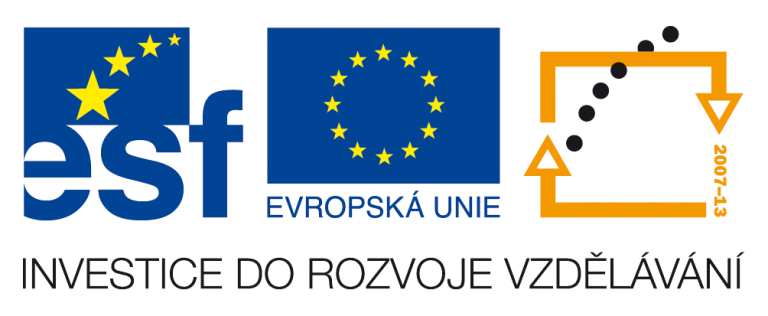Publikace
Morales; P. - Scharf; M. M. - Bermudez; M. - Egyed; A. - Franco; R. - Hansen; O. K. - Jagerovic; N. - Jakubík; Jan - Keserű; G. M. - Kiss; D. J. - Kozielewicz; P. - Larsen; O. - Majellaro; M. - Mallo-Abreu; A. - Navarro; G. - Prieto-Díaz; R. - Rosenkilde; M. M. - Sotelo; E. - Stark; H. - Werner; T. - Wingler; L. M. Progress on the development of Class A GPCR-biased ligands. British Journal of Pharmacology. 2025; 182(14); 3249-3300.
IF = 7.7
Pomar; C. A. - Zouhar; Petr - DeLucas; M. - Čajka; Tomáš - Cobo; P. - Jiménez-Cabanillas; M. V. - Bibiloni; P. - Kopecký; Jan - Palou; A. - Serra; F. - Sánchez; J. - Picó; C. Breast Milk Metabolomic Profile Is Associated With Maternal Overweight/Obesity Status or Adherence to Mediterranean Diet and Infant Weight Gain During the First Month of Lactation. Food Frontiers. 2025; 6(3); 1454-1468.
IF = 6.9
Janovská; Petra - Bardová; Kristina - Prouzová; Z. - Irodenko; Ilaria - Kobets; Tatyana - Haasová; Eliška - Steiner Mrázová; Lenka - Stránecký; V. - Kmoch; S. - Rossmeisl; Martin - Zouhar; Petr - Kopecký; Jan Faster postnatal decline in hepatic erythropoiesis than granulopoiesis in human newborns. Frontiers in Pediatrics. 2025; 13(20 May); 1572836.
IF = 2.0
Mlejnek; Petr - Liška; František - Večerková; Kateřina - Šimáková; Miroslava - Pravenec; Michal - Kurtz; T. W. Early reduction of skin potassium without sodium accumulation in the pathogenesis of salt sensitivity in primary aldosteronism. Frontiers in Pharmacology. 2025; 16(29 April); 1575972.
IF = 4.8
Musílková; Jana - Beran; M. - Sedlář; Antonín - Slepička; P. - Bartoš; M. - Kolská; Z. - Havlíčková; Š. - Luňáčková; J. - Svobodová; Lucie - Froněk; M. - Molitor; M. - Chlup; H. - Bačáková; Lucie Composite Polylactide/Polycaprolactone Foams with Hierarchical Porous Structure for Pre-Vascularized Tissue Engineering. International Journal of Molecular Sciences. 2025; 26(7); 2974.
IF = 4.9
Frolíková; M. - Blažíková; M. - Čapek; Martin - Chmelová; H. - Valečka; J. - Koláčková; V. - Valášková; E. - Gregor; M. - Komrsková; K. - Horváth; O. - Novotný; I. Innovative sample preparation using alcohol dehydration and high refractive index medium enables acquisition of two-channel super-resolution 3D STED image of an entire oocyte. Journal of Microscopy. 2025; 297(2); 165-178.
IF = 1.9
Šimoník; Ondřej - Bryndová; Barbora - Sur; Vishma Pratap - Děd; Lukáš - Čočková; Z. - Benda; A. - Qasemi; Maryam - Pecina; Petr - Pecinová; Alena - Spěváková; Daniela - Škrobánek; P. - Hradec; T. - Ezrová; Zuzana - Krátká; Z. - Křen; R. - Ješeta; M. - Boublíková; L. - Zámečník; L. - Büchler; T. - Neužil; Jiří - Postlerová; Pavla - Komrsková; Kateřina Bioenergetics of human spermatozoa in patients with testicular germ cell tumours. Molecular Human Reproduction. 2025; 31(1); gaaf005.
IF = 3.5
Janošev; Maša - Košek; Dalibor - Tekel; Andrej - Joshi; Rohit - Honzejková; K. - Pohl; Pavel - Obšil; Tomáš - Obšilová; Veronika Structural basis of ubiquitin ligase Nedd4-2 autoinhibition and regulation by calcium and 14-3-3 proteins. Nature Communications. 2025; 16(26 May); 4875.
IF = 15.7
Abad; C. - Musilová; I. - Cífková; E. - Portillo; R. - Kumnova; F. - Karahoda; R. - Štěrba; M. - Lísa; M. - Kacerovský; M. - Stráník; J. - Stuchlík; Aleš - Štaud; F. Impact of intraamniotic inflammation on tryptophan metabolism in the placenta-fetal brain axis in rats. Reproduction. 2025; 169(5); e240378.
IF = 3.7
Rogulska; Olena - Vavřínová; E. - Vacková; Irena - Havelková; Jarmila - Gotvaldová; Klára - Abaffy; P. - Kubinová; Š. - Šíma; M. - Rössner ml.; P. - Bačáková; Lucie - Jendelová; P. - Smolková; Katarína - Petrenko; Yuriy The role of cytokine licensing in shaping the therapeutic potential of wharton’s jelly MSCs: metabolic shift towards immunomodulation at the expense of differentiation. Stem Cell Research & Therapy. 2025; 16(1); 199.
IF = 7.3
Ahmed; A. A. A. - Alegret; N. - Almeida; B. - Alvarez-Puebla; R. - Andrews; A. M. - Ballerini; L. - Barrios-Capuchino; J. J. - Becker; C. - Blick; R. H. - Bonakdar; S. - Chakraborty; I. - Chen; X. - Cheon; J. - Chilla; G. - Coelho Conceicao; A. L. - Delehanty; J. - Dulle; M. - Efros; A. L. - Epple; M. - Fedyk; M. - Feliu; N. - Feng; M. - Fernandez-Chacon; R. - Fernandez-Cuesta; I. - Fertig; N. - Foerster; S. - Garrido; J. A. - George; M. - Guse; A. H. - Patrono; Enrico Interfacing with the Brain: How Nanotechnology Can Contribute. ACS Nano. 2025; 19(11); 10630-10717.
IF = 16.0
Hsu; A. T. - Bugajev; Viktor - Gottschalk; T. A. - Demková; Lívia - Potůčková; Lucie - Dráberová; Lubica - Bambousková; Monika - Hagemann; P. - O'Brien; C. A. - Riečan; Martin - Kuda; Ondřej - Tsantikos; E. - Dráber; Petr - Wright; M. D. - van Spriel; A. B. - Hibbs; M. L. - Hálová; Ivana Tetraspanin CD53 Promotes Inflammation but Restrains Mucus Production in a Mouse Model of Allergic Airway Inflammation. Allergy. 2025; 80(4); 1127-1131.
IF = 12.0
Alán; Lukáš - Opletalová; Barbora - Hayat; Habiba - Marković; Aleksandra - Hlaváčková; Markéta - Vrbacký; Marek - Mráček; Tomáš - Alánová; Petra Mitochondrial metabolism and hypoxic signaling in differentiated human cardiomyocyte AC16 cell line. American Journal of Physiology-Cell Physiology. 2025; 328(5); C1571-C1585.
IF = 4.7
Skagen; Ch. - Stevanovic; S. - Bakke; H. G. - Nyman; T. A. - Stensland; M. - Kase; E. T. - Horáková; Olga - Rustan; A. C. - Thoresen; G. H. Reduced lipid and glucose oxidation and reduced lipid synthesis in AMPK?2-/- myotubes. Archives of Physiology and Biochemistry. 2025; 131(3); 483-492.
IF = 2.7
Jarabicová; I. - Horváth; C. - Hrdlička; Jaroslav - Boroš; Almoš - Olejníčková; Veronika - Zábrodská; E. - Štemberková-Hubáčková; Soňa - Šutovská; H. M. - Molčan; Ľ. - Kopkan; L. - Chudý; M. - Kura; B. - Kaločayová; B. - Goncalvesová; E. - Neckář; Jan - Zeman; M. - Kolář; František - Adameová; A. Necrosis-like cell death modes in heart failure: the influence of aetiology and the effects of RIP3 inhibition. Basic Research in Cardiology. 2025; 120(2); 373-392.
IF = 8.0
Brejchová; Kristýna - Rahm; Michal - Beňová; Andrea - Domanská; Veronika - Reyes Gutierrez; Paul Eduardo - Džubanová; Martina - Trubačová; Radka - Vondráčková; Michaela - Čajka; Tomáš - Tencerová; Michaela - Vrábel; Milan - Kuda; Ondřej Uncovering mechanisms of thiazolidinediones on osteogenesis and adipogenesis using spatial fluxomics. Metabolism-Clinical and Experimental. 2025; 166(May); 156157.
IF = 11.9
Villani; F. - Guarracino; A. - Ward; R. R. - Green; T. - Emms; M. - Pravenec; Michal - Sharp; B. - Prins; P. - Garrison; E. - Williams; R. W. - Chen; H. - Colonna; V. Pangenome reconstruction in rats enhances genotype-phenotype mapping and variant discovery. iScience. 2025; 28(2); 111835.
IF = 4.1
Lems; W. F. - Anastasilakis; A. D. - Andreasen; C. M. - Paccou; J. - Rolvien; T. - Tencerová; Michaela - Tuckermann; J. - Yavropoulou; M. P. - Soe; K. Basic and Clinical Scientists Working Together-Do We Make the Best of Both Worlds?. Calcified Tissue International. 2025; 116(1); 39.
IF = 3.2
Myšková; A. - David; T. - Šedinová; M. - Demirci; I. - Polášek; M. - Kuneš; Jaroslav - Maletínská; L. - Sýkora; D. - Kaňa; A. Liquid chromatography–inductively coupled plasma mass spectrometry analysis of peptides labelled with ClickZip mass tags. Analytica Chimica Acta. 2025; 1350(May); 343853.
IF = 6.0
Černotová; Daniela - Hrůzová; Karolína - Touš; Jan - Janča; R. - Stuchlík; Aleš - Levčík; David - Svoboda; Jan Early social deficits in TgF344-AD rats are accompanied by sex-specific parvalbumin-positive interneuron reduction and altered brain oscillations in the hippocampal CA2. Neurobiology of Disease. 2025; 208(May); 106875.
IF = 5.6
Hamed; A. - Kursa; M. B. - Mrozek; W. - Piwoński; K. P. - Falińska; M. - Danielewski; K. - Rejmak; E. - Włodkowska; U. - Kubík; Štěpán - Czajkowski; R. Spatio-temporal mechanisms of consolidation; recall and reconsolidation in reward-related memory trace. Molecular Psychiatry. 2025; 30(April); 1319-1328.
IF = 10.1
Li; L. - Wu; Z. - Guarracino; A. - Villani; F. - Kong; D. - Mancieri; A. - Zhang; A. - Saba; L. - Chen; H. - Brožka; Hana - Valeš; Karel - Senko; A. N. - Kempermann; G. - Stuchlík; Aleš - Pravenec; Michal - Lechner; J. - Prins; P. - Mathur; R. - Lu; L. - Yang; K. - Peng; J. - Williams; R. W. - Wang; X. Genetic modulation of protein expression in rat brain. iScience. 2025; 28(3); 112079.
IF = 4.1
Slepička; P. - Kasálková-Slepičková; N. - Musílková; Jana - Bačáková; Lucie - Frýdlova; B. - Sajdl; P. - Kolská; Z. - Rebollar; E. - Švorčík; V. PLLA honeycombs activated by plasma and high-energy excimer laser for stem cell support. Applied Surface Science Advances. 2025; 25(January); 100662.
IF = 8.7
Bhaskaran; R. A. - Vondráčková; Z. - Koladiya; A. - Čapek; Martin - Dionigi; F. - Begall; S. - Burda; H. - Peichl; L. - Němec; P. Distinct retinal ganglion cell types in strictly subterranean; naturally microphthalmic mammals. Proceedings of the Royal Society B-Biological Sciences. 2025; 292(2038); 20242586.
IF = 3.5








